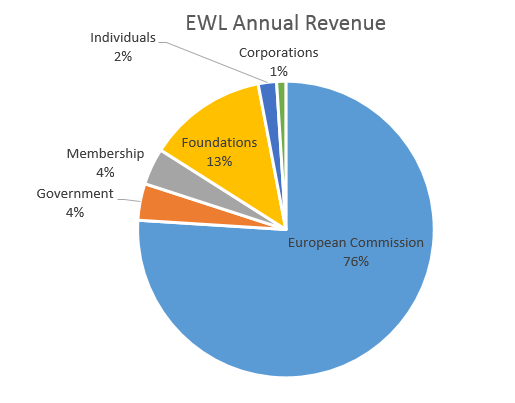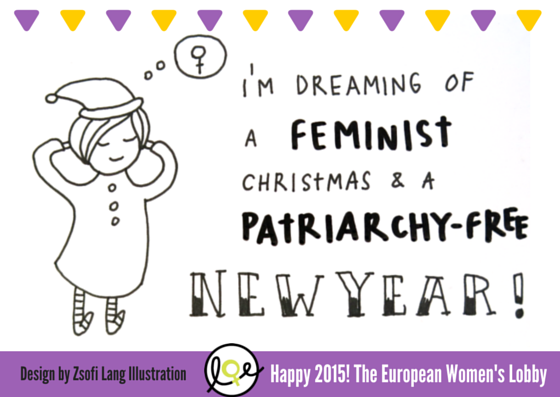What does the campaign concretely aim at?
The very first goal is to raise awareness. We want people to talk about prostitution, confront what they think it is with the reality, discuss their legal system, listen to the voices of survivors, etc. We want the issue to be back on the agenda because we refuse the taboo about it, or the opaque political decision about it.
We also want to bring political and social change, and the political aspect of the campaign is important: we support the advocacy work of our member organisations and partners at national level, and we develop advocacy work at EU level. There are already many MEPs that are open to our vision and support it.
Concretely, we aim at a society where:
- Prostitution is a considered as a form of violence against women, an obstacle to equality between women and men, and a violation of women’s human rights
- Persons in prostitution are not criminalized, but offered services and alternatives (economic, social, housing, education, health, etc.)
- All forms of procuring and trafficking in human beings are criminalised
- There is generalised education on sexuality and respectful relations between women and men
- The prostitute-users are criminalisd, because we believe that they should be held accountable for their acts
Why a European campaign? The EU has no competence on this.
Because it’s a European issue: there are systems of prostitution in all EU member states.
Because although most people might dream of a world free from prostitution, there is little conception of how to make it happen. So the EWL decided to act. And to produce awareness raising material, so that others who share this goal can use it. And to make survivors’ voice heard.
Because the EU has some legal basis to act against the system of prostitution: article 83 of the Lisbon Treaty provides for the possibility of an EU action in the field of judicial cooperation in criminal matters, regarding specific crimes with a cross—border dimension and needing a common action to combat them. The article lists ‘sexual exploitation of women and children’.
Article 83
1. The European Parliament and the Council may, by means of directives adopted in accordance with the ordinary legislative procedure, establish minimum rules concerning the definition of criminal offences and sanctions in the areas of particularly serious crime with a cross-border dimension resulting from the nature or impact of such offences or from a special need to combat them on a common basis.
These areas of crime are the following: terrorism, trafficking in human beings and sexual exploitation of women and children, illicit drug trafficking, illicit arms trafficking, money laundering, corruption, counterfeiting of means of payment, computer crime and organised crime.
Besides, 18 out of 27 EU member States have ratified the UN Convention of 1949 for the Suppression of the Traffic in Persons and of the Exploitation of the Prostitution of Others. This Convention is the founding international abolitionist text which states that prostituted persons should not be criminalised and should be protected, and that procuring and trafficking in human beings should be criminalised. We want that all Member States ratify it, and to have it concretely implemented in the EU member states which have endorsed it.
There are different approaches to the system of prostitution in Euorpe, according to countries and policy stances.
There are nowadays three main approaches to the system of prostitution:
- Regulationism: prostitution is a job, procuring is decriminalised (Germany, the Netherlands)
- Abolitionism: prostitution is considered as violence against women, procuring and prostitute-users are criminalised (Sweden, Norway, Iceland)
- Prohibition: ‘Just hide it!’Persons in prostitution and procuring are criminalised, sometimes also prostitute-users (Croatia)
We believe that there should be only one way to address prostitution, which is about setting a standard for human dignity for all, and it goes along the abolitionist model. The EU should be leading this political and social change because the EU abides by the very fundamental principle of equality between women and men.
Why is prostitution violence against women?
There is a lot of violence against persons in prostitution. 73% of women in prostitution report having been subjected to physical aggressions while in prostitution. 68% of women in prostitution meet the criteria for Post-Traumatic Stress Disorder in the same range as victims of torture. 62% of women in prostitution report having been raped.
But prostitution also has an impact on violence against women in general. Do you know that Nevada, where procuring is decriminalised, sees the highest rates of rape compared to all US states? Prostitution has an impact on social tolerance for violence against women: For 25% of men, the concept of ‘rape’ for women in prostitution is ‘ridiculous’.
Prostitution is about patriarchy: it is the ultimate male control over women’s bodies and sexuality, through an exchange of money or an abuse of unequal economic relations.
Incest, rape, marital rape are outlawed thanks to women’s NGOs; the system of prostitution remains as the ultimate place for male domination, legitimised by a distorted representation of equality in commercial exchange – money exchange is all but an expression of equality!
Pascale Rouges, survivor of prostitution: ‘Prostitution cannot be an alternative; it is a societal duty to find alternatives for women so that they live in dignity and don’t fall into prostitution.’
EWL abolitionist principles:
The prostitution of women and girls constitutes a fundamental violation of women’s human rights and a serious form of male violence against women. The tolerance of the EU and its member states for the system of prostitution allow for men’s use of and control over women’s body and sexuality, and fuels trafficking in women for sexual exploitation. The persistence of systems of prostitution in EU member states demonstrates the failure at European level to reach gender equality and promote women’s rights.
Why calling on men to stand up against the system of prostitution?
Because many men are not prostitute-users and don’t feel comfortable with a society where some women can be bought for sex. So we need to listen to them, support them and have them speak out.
The EWL campaign clip has been directed by a feminist man.
A Swedish report shows that men who used to be prostitute-users stopped using prostitutes as a result of the Swedish law criminalising the buyers. It shows that men’s behaviour can change!
What are the links between trafficking and prostitution?
Would you be willingly in prostitution, or trafficked into prostitution, the very act of prostitution is the same: it’s about being paid to give access to your body and sexuality, it’s about sexual relationships without desire, it’s about being in an unequal situation with the buyer because you need the money.
The EWL believes that by tolerating the systems of prostitution, we support traffickers and organised crime. When addressing trafficking, we have to address the root causes, and they are clear: it’s the prostitution and the sexual exploitation of some women for the demand of some men, that fuels trafficking in human beings for sexual exploitation. Without prostitution, without demand for prostituted persons, there would be no trafficking! Trafficking also exists because the systems of prostitution are profitable! Victims of sexual exploitation account for US$ 27.8 billion. Women constitute 85% of the victims of trafficking for sexual exploitation.


